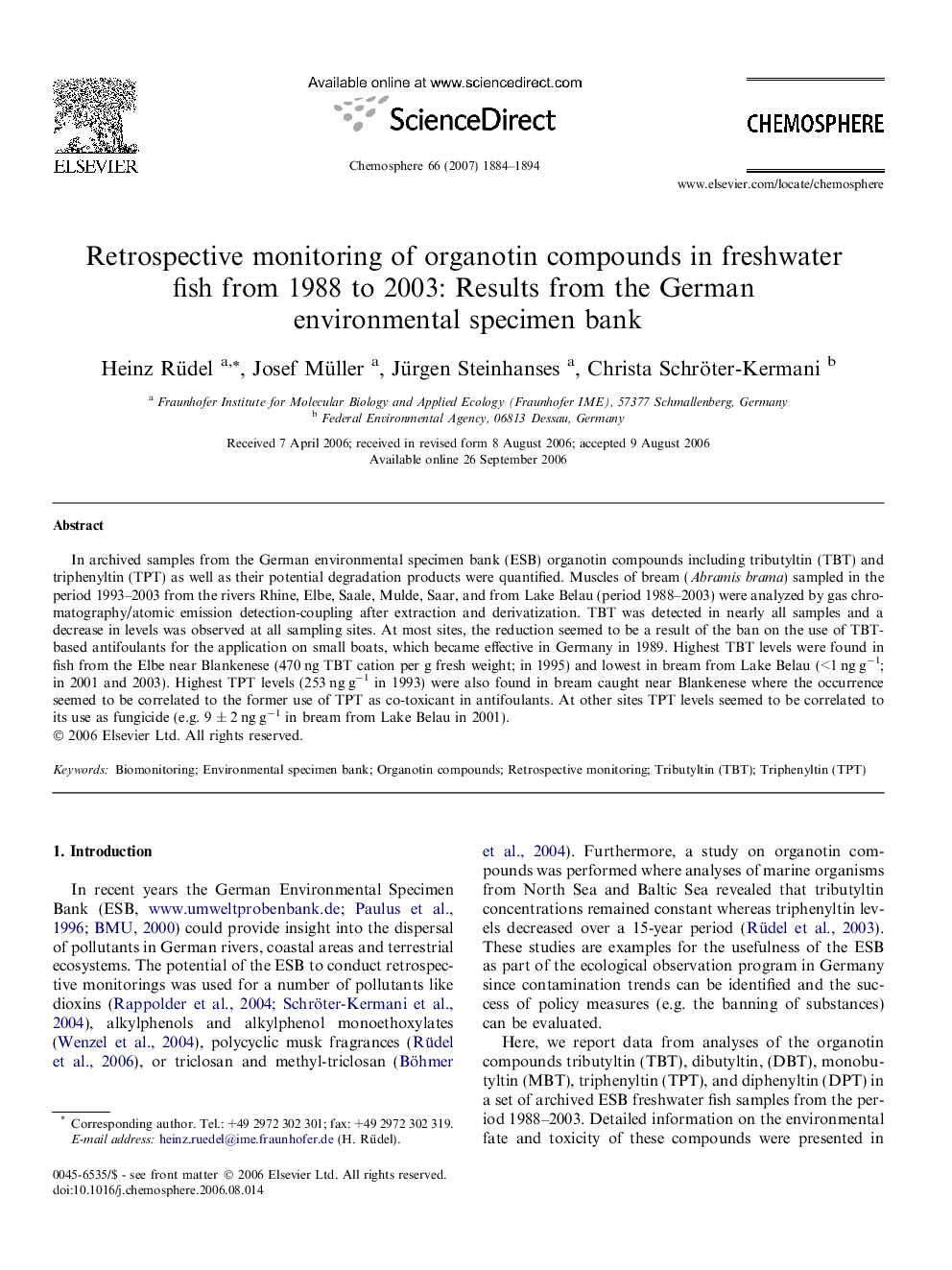| Article ID | Journal | Published Year | Pages | File Type |
|---|---|---|---|---|
| 4415766 | Chemosphere | 2007 | 11 Pages |
In archived samples from the German environmental specimen bank (ESB) organotin compounds including tributyltin (TBT) and triphenyltin (TPT) as well as their potential degradation products were quantified. Muscles of bream (Abramis brama) sampled in the period 1993–2003 from the rivers Rhine, Elbe, Saale, Mulde, Saar, and from Lake Belau (period 1988–2003) were analyzed by gas chromatography/atomic emission detection-coupling after extraction and derivatization. TBT was detected in nearly all samples and a decrease in levels was observed at all sampling sites. At most sites, the reduction seemed to be a result of the ban on the use of TBT-based antifoulants for the application on small boats, which became effective in Germany in 1989. Highest TBT levels were found in fish from the Elbe near Blankenese (470 ng TBT cation per g fresh weight; in 1995) and lowest in bream from Lake Belau (<1 ng g−1; in 2001 and 2003). Highest TPT levels (253 ng g−1 in 1993) were also found in bream caught near Blankenese where the occurrence seemed to be correlated to the former use of TPT as co-toxicant in antifoulants. At other sites TPT levels seemed to be correlated to its use as fungicide (e.g. 9 ± 2 ng g−1 in bream from Lake Belau in 2001).
